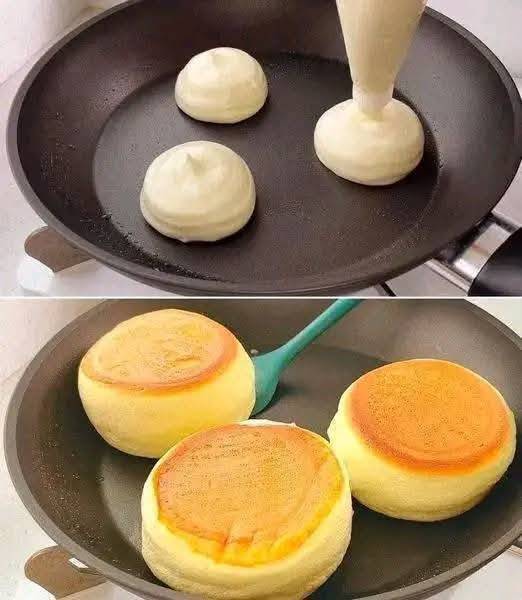Tips
Always use fresh eggs for the best results, as older eggs may not whip up as well. When folding the meringue into the batter, use a spatula and cut through the center of the mixture, folding it over itself in a gentle motion. This technique helps maintain the airiness of the batter.
If your pancakes deflate after cooking, it could be due to undercooking or overmixing the batter. Ensure the pancakes are fully cooked by checking that the centers are set and the bottoms are golden brown. Using a non-stick pan or well-greased molds will prevent sticking and make flipping easier.
For an extra touch of indulgence, serve the pancakes with whipped cream, fresh fruit, or a drizzle of syrup. Dusting them with powdered sugar adds a beautiful finishing touch. These pancakes are best enjoyed fresh, but with a little practice, you’ll be able to whip them up effortlessly.
How to Store
Fluffy Japanese pancakes are best enjoyed immediately after cooking, as they tend to lose their airy texture over time. If you have leftovers, store them in an airtight container at room temperature for up to a few hours. For longer storage, place them in the refrigerator for up to a day, though they may deflate slightly.
To reheat, gently warm the pancakes in a microwave for a few seconds or in a covered pan over low heat. Avoid overheating, as this can make them dry. While they may not be as fluffy as when freshly made, they’ll still be delicious with your favorite toppings.
Conclusion
Fluffy Japanese pancakes are a delightful treat that combines simplicity with a touch of culinary artistry. Their light, airy texture and versatility make them a favorite for breakfast, brunch, or even dessert. While they require a bit of patience and practice, the results are well worth the effort.
Whether you stick to the classic recipe or experiment with variations, these pancakes are sure to impress. Serve them with your favorite toppings and enjoy the magic of these jiggly, cloud-like creations. Happy cooking!

